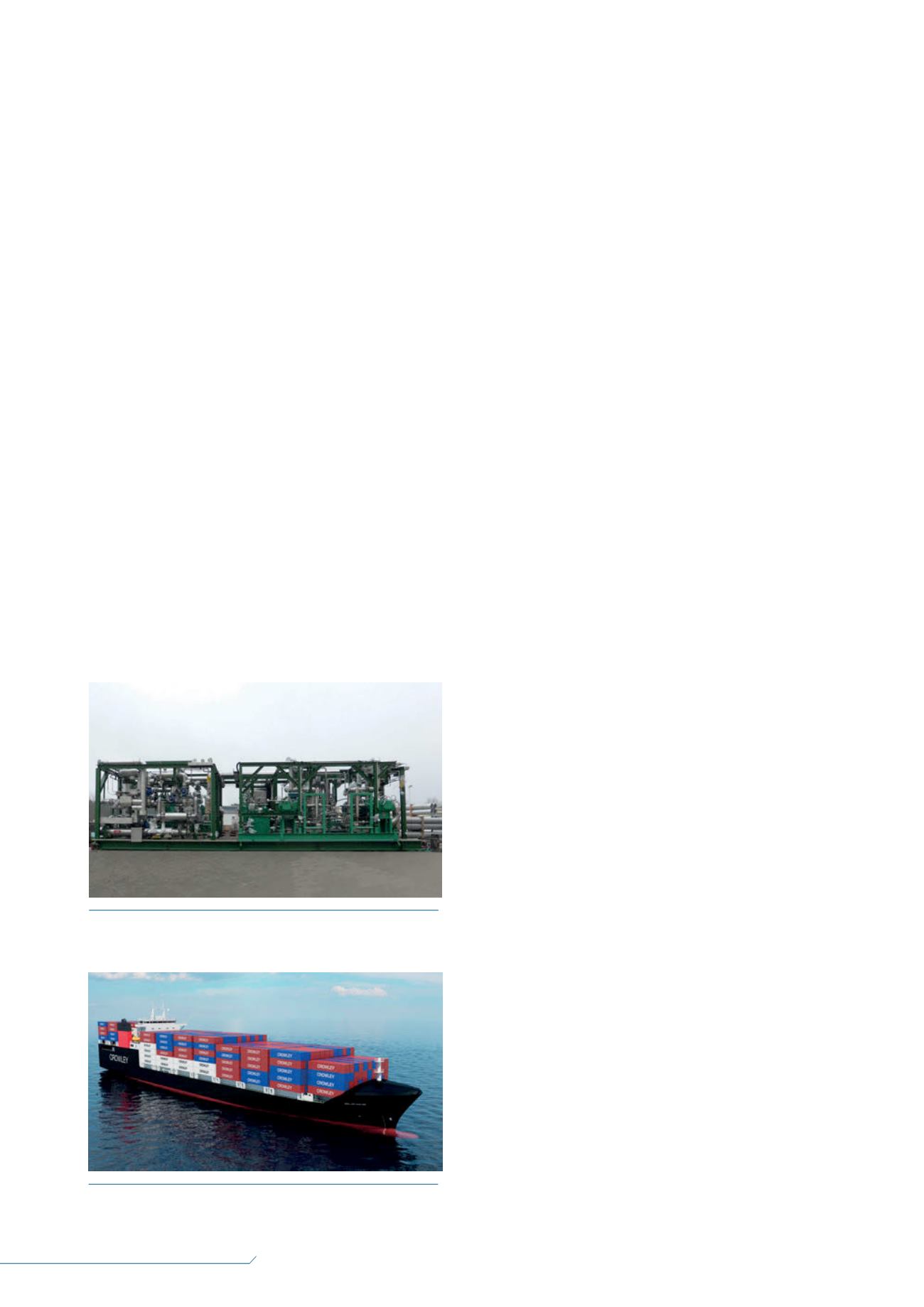
20
LNG
INDUSTRY
SEPTEMBER
2016
on reduced timing, in order to put the vessel back into
operation within the shortest possible window. A
skid-mounted solution was chosen to comply with such
requirements, improving the delivery time and the
installation time.
The design steps were as follows:
Interface and basic data verification to fix the design
basis.
Basic design producing piping and instrumentation
diagrams (PIDs).
Basic design review with all parties (owner/shipyard/
class).
Part of the basic design review: implementation
of hazard identification study (HAZID)/hazard and
operability study (HAZOP) recommendations.
Detail design, including signal exchange and
automation.
3D review arrangement with a focus on safety and
maintenance access, including implementation of
recommendations from class and operators.
Failure mode and effects analysis (FMEA) with ABS
consulting.
Implementation of FMEA recommendations and
reviews.
High pressure system simulation used from the
beginning to verify functionality and automation of
the high pressure system, with a final ‘software in the
loop’ simulation test.
There was a particular focus on the integration of the
systems with the existing automation of the vessel. In this
regard, TGE’s engineering team closely cooperated with
the University of Cologne on the development of a control
system, which can cope with high speed load profiles
imposed by two-stroke dual-fuel main engines while
running on LNG as a primary fuel. Meanwhile, a European
patent has been granted for this control system with
patent application pending in many other countries. The
control system has been comprehensively tested on board
and is working perfectly under different profiles with two
main engines in operation.
Who is next?
Following the example of Nakilat, many other projects,
mainly with high pressure MAN ME-GI engines, followed,
for which TGE designed and delivered the fuel gas
systems and LNG tanks.
Navigator Gas ordered a series of ethylene tankers
with LNG fuel propulsion. The LNG will be stored in a
dedicated deck tank with polystyrene insulation slabs
(foam-insulated) and the fuel gas system will provide the
natural gas to both high pressure main engines and low
pressure auxiliary engines. The gas trial was held at the
end of June 2016.
Crowley Maritime Corp. ordered two ConRo ships,
which are some of the first LNG-powered, combination
container and RoRo (ConRo) vessels in the world. The
vessels will be in service between the US and Puerto Rico.
Rasheeda
Qatari shipping company Nakilat decided to convert
the high pressure main engine of its 266 000 m
3
Q-Max
vessel,
Rasheeda
. This led to a reduction in sulfur, SO
X
and
NO
X
emissions, as well as reduced fuel consumption.
In October 2015, Qatargas, together with engine
manufacturer MAN Diesel & Turbo and TGE Marine Gas
Engineering (who supplied the LNG fuel gas system),
announced that the commissioning of the Q-Max vessel
was successfully completed, setting new milestones and
benchmarks for LNG as marine fuel.
The vessel propulsion is provided by two MAN
two-stroke engines MAN B&W 7S70 ME-C, with a total
power of approximately 38 000 kW. The skid-mounted
fuel gas system, provided by TGE, consists of the
following:
Low pressure LNG pumps.
A buffer LNG tank.
High pressure LNG pumps.
A high pressure vaporising unit.
An integrated automation system extension.
The LNG will be taken directly from the main tanks
through the low pressure booster pump and sent to the
high pressure pump through a small deck tank. The LNG
fuel gas system has to provide the fuel gas at 300+ barg
to the engines.
The biggest challenge for MAN and TGE, according to
Nakilat requirements, was to complete the retrofit based
Figure 2.
TGE Marine Gas Engineering’s high pressure skid on
Rasheeda
.
Figure 3.
Crowley Maritime’s ConRo ship.


